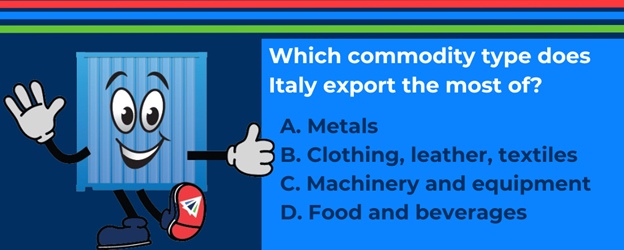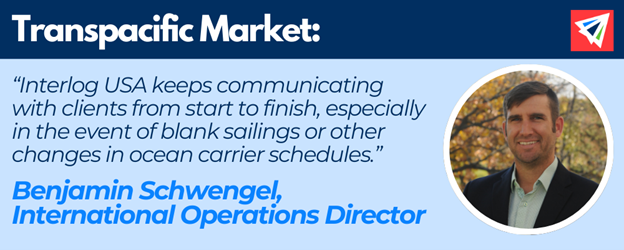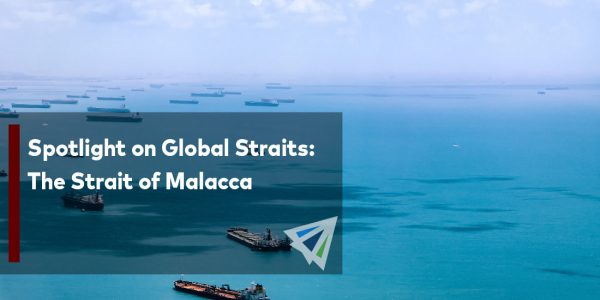Competitive Edge
November 6th, 2024
Stay Current with InterlogUSA
Latest Industry Happenings and Market Updates:
Across International Shipping: News and Developments
[Labor] Uncertainty at Canada’s Largest Ports: A series of work stoppages continue to impact freight handling operations across Canada’s largest ports of Vancouver, Montreal, and Prince Rupert.
[Port Update] Florida Port Recaptures Major Carrier Services: Beginning November, South Florida’s Port Everglades was reintroduced in two weekly services of ocean carrier MSC: U.S.-South America and U.S.-Mediterranean.
IMPORT: Asia to North America (Transpacific Eastbound)
Rates: Rates have relaxed since October. Some major carriers plan to implement general rate increases (GRIs) mid-November.
Capacity: In the new year, ocean carriers could begin to implement blank (cancelled) sailing programs to trim excess capacity expected in the market.
Congestion: Mild congestion related to the longshore strike in early October has diminished. Cargo handling operations at USEC/GC ports are presumed normal.
TIPS:
- As the year reaches its end, Q4 can be the right time to get a head start on your 2025 transportation and logistics strategies. While business needs can vary, in most cases, a discussion and evaluation of service providers (carriers, forwarders, Customs brokers, etc.,) should be top of mind, especially as it relates to any potential shortcomings in existing providers throughout 2024.
IMPORT: Europe to North America (Transatlantic Westbound)
2025 Services: Major carriers continue to unveil upcoming changes to their transatlantic offerings, including additional options to the Caribbean and South America.
Rates: Aside from a traditional round of peak season surcharges (PSSs), rates have generally shown little change since August.
Capacity: Available capacity at Europe ports have shown some signs of strain.
EXPORT: North America to Asia
Rates: Outbound rates to Asia from the U.S. East Coast have decreased slightly. Meanwhile, U.S. West Coast to Asia services remain at steady rate levels.
Space: Rail service to the U.S. West Coast has been challenged as increased dwell on import containers delay the pickup of time-sensitive agriculture exports.
Equipment: Slowdowns in equipment placement are being reported at several inland gateways, including Minneapolis and Omaha.
Freight News
Nearly $3 Billion in Federal Grants Go Towards Port Modernization Projects
Reshuffling of Alliances: Will Gemini Cooperation Uphold Their 90% Schedule Reliability Promise?
Through the Environmental Protection Agency’s Clean Ports Program, 55 applicants throughout 27 states and territories will receive part of the nearly $3 billion in total funds. Here’s some of the recipients and examples of future projects:
New York and New Jersey (PANYNJ): they will receive around $344,138,135 to work with partners in implementing their proposed project. Which will include the deployment of electric cargo handling equipment and drayage trucks with supporting charging infrastructure, per the EPA. Within the project, they will also install vessel shore power infrastructure.
Detroit/Wayne County Port: they will receive around $21,905,782 to start the transition to zero-emissions at the Port of Detroit. The project will have them acquire and deploy battery-electric cargo handling equipment, vessels, railcar movers, charging equipment, and solar arrays, per the EPA. Additionally, they will scrap the diesel cargo handling equipment, a vessel, and a railcar mover at the port in an effort to decrease air pollution at the port.
Georgia Ports: they will receive around $48,763,746 to have vessel shore power systems at the Port of Savannah and the Port of Brunswick, per the EPA. Additionally, they will scrap and replace the diesel terminal tractors with new electric terminal tractors and the installation of electric charging infrastructure.
Port of Oakland: they will receive around $322,167,584 to buy and deploy zero-emission technology at the Port, per the EPA. This will include the deployment of electric and hydrogen cargo handling equipment, drayage trucks, charging infrastructure, battery energy storage system, and scrapping of part of their existing diesel fleet.
During a third-quarter earnings call last Thursday, Maersk CEO Vincent Clerc told analysts that he anticipated a smooth transition as the company shifts from their current partnership in 2M Alliance with MSC, to their upcoming new alliance (Gemini Cooperation), with Hapag-Lloyd. Hapag-Lloyd will also be transitioning from the current alliance to Gemini beginning in February.
Clerc anticipates about 13 weeks for the full cycle to align with their new network, the JOC reports. Once fully stabilized, he says Gemini Cooperation’s next priority will be to prove it’s ability to significantly enhance schedule reliability throughout the system.
To sum it up, Clerc says the first priority is to maintain and establish a smooth transition. Once that happens, they’ll review and see how they continue to improve the value their creating for their customers.
Curious about the different ocean carrier alliances? Read more about them here.
Did you know? With Johnny Cargo!
InterlogUSA’s chat bot Johnny Cargo sure is an inquisitive soul. However, he doesn’t just ask about industry-related trivia. Johnny also loves to ask supply chain professionals about their shipping arrangements and which areas can benefit from InterlogUSA’s assistance as an end-to-end freight forwarder.
He works around the clock and is always available for conversation.

Sign up for our
industry answers
Our team works to provide valuable, unique, and relevant content to assist you in finding solutions. Sign up now.


